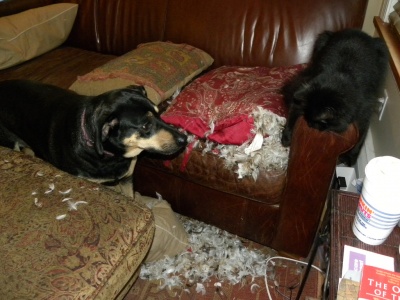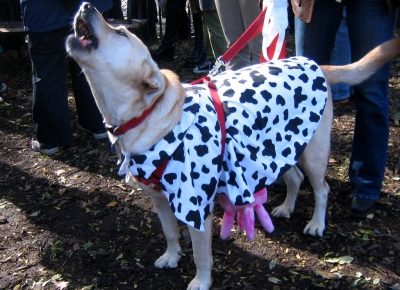
Dogs need to chew. It’s what they do and it’s a natural and healthy activity. However, we do prefer that our canines don’t use their canines on our favorite pair of shoes or the new sofa.
Dogs chew for a number of reasons. Puppies chew because they are teething and it helps soothe the pain. Teenagers chew because they are curious and chewing passes information to them. Dogs that are stressed or feel anxious chew for its calming effect. Endorphins are released while they chew, producing a feeling of well-being. Dogs will often chew on something when they are fearful, suffer separation anxiety or want attention.
Dogs don’t understand the difference between chewing things of value to us or things that meet with our approval. That’s why punishment is ineffective and should never be used as a learning tool.
First, remove anything you value out of your dog’s reach. Instead, offer different types of toys. Allow your dog to play with 2 or 3 toys at a time, rotating toys to keep your dog alert and interested. Some of the toys available can have treats placed inside them, offering your dog a challenge to get those treats.
Of course you can’t remove the sofa, but there are things you can do to discourage your dog from chewing it. If you see your dog chewing or about to chew on something inappropriate, give him/her a firm NO. Then offer your dog a favorite toy so that he/she understands chewing is okay with the correct item. Purchase toys that are different from your favorite items.
There are sprays available that won’t harm your dog but have a bitter taste. You can use something like that as a deterrent to chewing on items you can’t remove.
Make sure your dog has enough physical and mental stimulation. Exercise, long walks and so on, are great for a dog’s mood.
Until your dog is trained not to chew valuable items, when you leave the house, crate your dog. Make sure the crate is large enough for your dog to stand up and turn around. And don’t leave your dog crated for more than a few hours.
As with all training, keep it positive and reward your dog with lots of praise when behaving appropriately.
Related articles:


